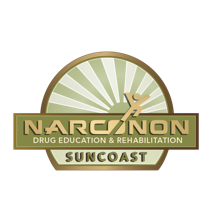By: Julia Shaw
Opiates are prevalent today. But have they always been? Suncoast Rehab delves into the past and brings to you: A Brief History of Opiates
The highly addictive opium poppy has been used for thousands of years as a recreational drug, for enhanced battle ability, and as a pain killer.
The first recorded use of opium that we know of was in ancient Mesopotamia. The opium poppy was called the “joy plant”. It was used to enhance things like sex and to create euphoria. This was all the way back in around 3400 BC.
Egyptians were introduced to opium and became famous for their poppy fields. The opium poppy became a trade good in around 1300 BC.
Alexander the Great used opium to kill his troop’s pain as they marched and battled. He introduced the drug to the people of Persia and India as he traveled and fought in these countries. This was around 330 BC. Later, Roman soldiers used the drug for the same reasons, but also to create a battle fervor which dulled the awareness of the soldiers to the risks and pain of battle.
Opium remained something of a footnote in history until Columbus discovered America instead of India and brought back tobacco instead of opium. Tobacco use changed how people consumed opium. In 1500, smoking opium was introduced to China. Smoking opium actually changes how the drug impacts the brain and increases its ability to create an addict.
Opium was also reintroduced to European medicine around the same time the Portuguese were introducing the smoking of opium to China. The main tincture of opium used as a pain killer in Europe was cause laudanum. This mixture caused addiction in many notable figures, such as Samuel Taylor Coleridge – a Romantic era poet who tried to beat the deadly addiction, Lord Byron, Percy Shelley, Charles Dickens, Lewis Carroll, Edgar Allan Poe, and more. This mixture became so popular that it was prescribed for a wide range of complaints – from menstrual cramps, to colicky babies, to mystery ailments, to injuries. Unsurprisingly, laudanum addiction caused many deaths.
Smoking opium didn’t really expand in China until around 1700, when the Dutch popularized it. After only around 30 years, Chinese emperor, Yung Cheng, prohibited recreational use of the drug. This didn’t stop the widespread use of opium, however. In 1750 England assumed control of the bulk of the opium trade – almost bankrupting China. England encouraged the sale and use of opium to raise funds for the purchase of tea in India, as part of its world trade. Addiction became a major problem in China.
In 1803, morphine was created by the German, Friedrich Sertuerner. The new form of opium was lauded as “God’s own medicine” and was considered reliable and safe.
In the early 1800s, fortunes were made smuggling Turkish opium to China. At around the same time, England’s opium use reached an all-time high at 22,000 pounds of opium.
China once again tried to suppress opium trafficking in the 1830s, beginning a war which is now known as the “First Opium War”. They were fighting against England’s exploitation of China’s addiction. In the 1840’s England won that war, causing China to pay them for the inconvenience. China wasn’t done, however, and started the “Second Opium War” in the 1850s. However, they lost again.
Additional notable developments in the drug in the 1800s were Dr. Alexander Wood’s discovery that, when administered in a syringe, morphine is more potent and works faster. Additionally, English researcher CR Wright synthesized heroin. In Germany, the term “heroin” was coined from the German ”heroisch,” meaning heroic or strong. Heroin began being sold as a diluted form of morphine, supposedly without the harmful morphine side effects. Back in America, San Francisco passed America’s first drug law by outlawing smoking opium in the city limits and confining the action to Chinatowns. Additionally, the US Congress imposed a tax on opium and morphine in its earliest law-enforcement legislation.
In the early 1900s, various medical journals began to discuss the side effects of heroin, arguing that patients were suffering from heroin withdrawal symptoms which were equal to morphine addiction. At the same time, heroin addiction spiked. The US Congress decided to ban opium, creating our first federal drug prohibition.
Finally, in 1910, China was able to convince England to disband the Inda-China opium trade. This was after 150 years and two wars on the subject.
In the 1920s, the first federal drug agency in America – The US Treasury Department’s Narcotics Division – banned all legal narcotics sales. This was the beginning of the illegal street dealing trade which thrives today, but clearly, the clients for this trade were created before it became illegal.
World War II cut off a lot of opium trade routes, but after the war the illegal sale of opium flourished throughout the US with the help of the Mafia. Later on, in the late 60’s, early 70’s, the US involvement in Vietnam was blamed for another surge in heroin smuggling into the US.
The heroin flow from Vietnam ended with the close of the war. However, when one door closes, another opens. Afghanistan, Iran, and Pakistan became major players in the opium trade game.
During this time, the tragic deaths continued as artists like Janice Joplin, John Belushi, and River Phoenix died by ODing on heroin or a combination of heroin and other drugs such as cocaine.
To this day, addiction to opiates is a big problem in the US and other countries. Opium and all its derivatives tend to be extremely addictive and no reasonable substitute has been found.
We offer a successful rehab which can get you off these life-destroying drugs. Call us: (877) 850-7355.
Sources: History Channel, NCBI, PBS, www.suncoastrehabcenter.com
